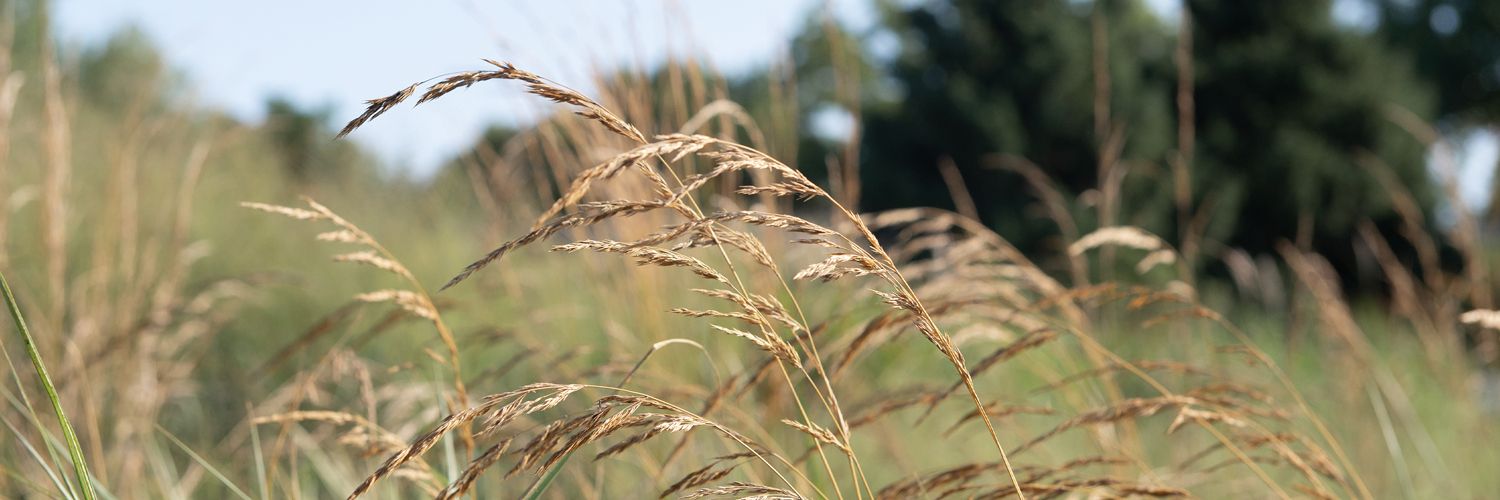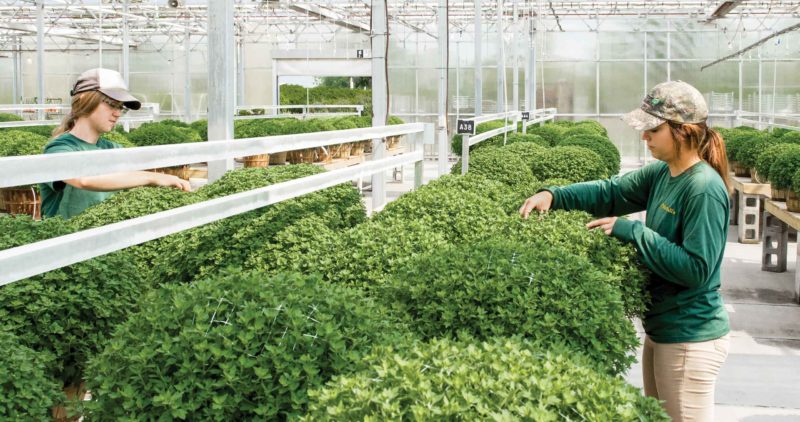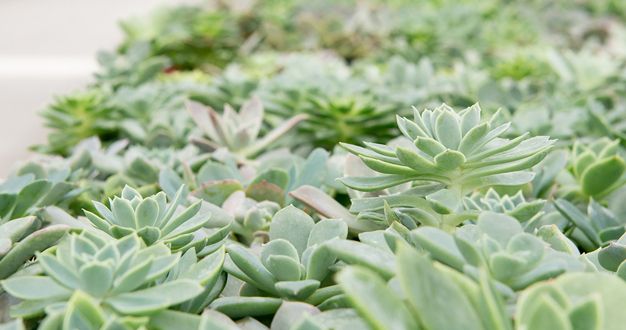
Grasses are some of the most iconic plants of our natural landscapes – once creating vast, waving seas across much of the Great Plains. In our urban landscapes, they add movement and texture from summer through winter and even create a beautiful display as their plumes become backlit by the sun. Here we share some of our favorites – including both Great Plains native and non-native species – and why they make the perfect addition for any sunny landscape.
A Great Plains Aesthetic
Thanks to topography and climate, grasses were the dominate vegetation across much of the central United States for over 23 million years. Moderate rainfall, periodic fires, and the activity of large grazing mammals kept trees at bay and allowed grasses and wildflowers to thrive. Few original undisturbed grasslands remain today, but we still appreciate the inspiration they can bring to our urban spaces.
Whether planted in large masses or tucked in among shrubs and perennials, ornamental grasses add movement and interesting texture that contrasts nicely with all the green, leafy perennials and shrubs in our landscapes. And with so many to choose from, they offer an exciting variety of heights, widths, colors, and bloom styles for different styles and functions within the design.
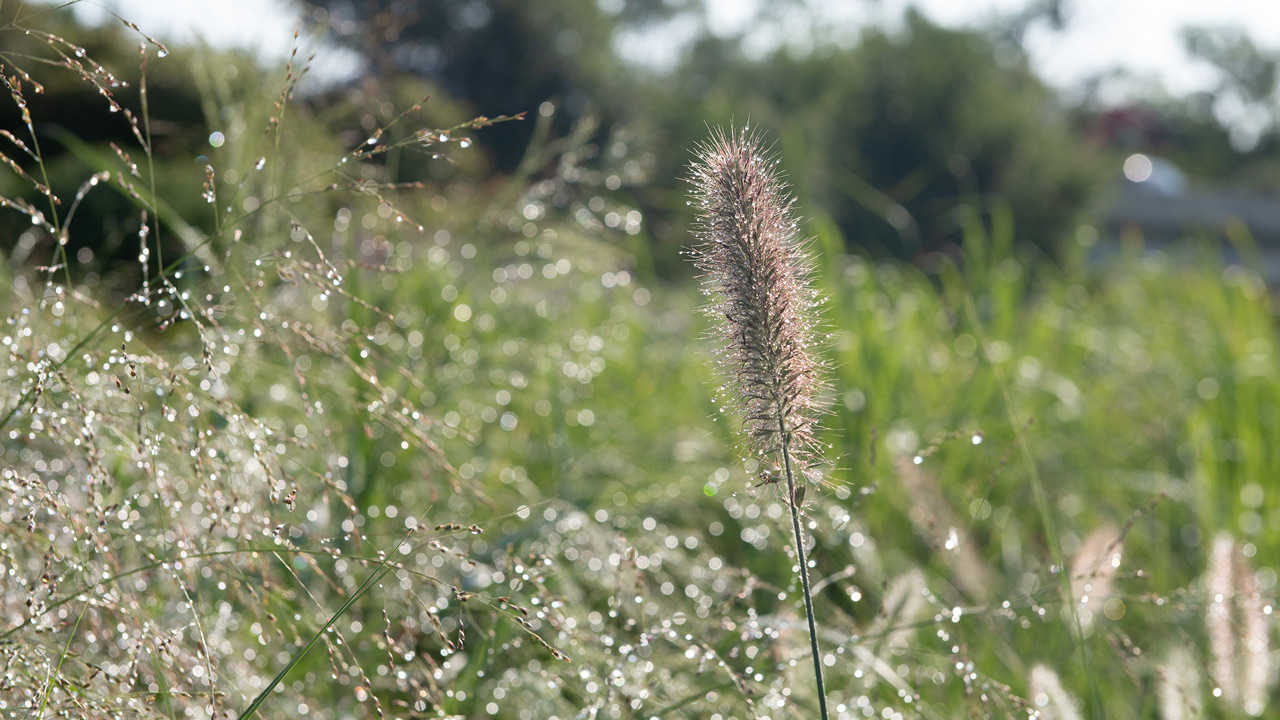
Built for the Midwest
Perennial grasses aren’t just beautiful – our native species are also adapted to thrive through the extremes of our Midwest climate and support local ecosystems too.
Extensive root systems reach deep into the soil to insulate perennial grasses from hot, dry summers and cold, dry winters. Once established, most ornamental grasses require little or no additional water or fertilizer to grow, and they’re almost never bothered by insect pests or diseases. They reliably return each year, even after the harshest winters, and wind isn’t a problem either – it just brings out that swaying movement we love to see in the landscape. The non-native grasses in our collection like our Midwest climate too. They may need a little more water – but that just means they feel right at home in well-cultivated urban landscapes.
And because native grasses have evolved with a whole community of native insects, birds, and other wildlife, they’re able to provide some of the most beneficial and recognizable food, shelter, and nesting resources that grassland-native insects and animals look for throughout the year.

Bouteloua curtipendula // Sideoats Grama
1-3’ tall + wide
This interesting Great Plains native is shorter than most but makes up for it with some of the most intriguing seed heads you’ll find in a grass. As the name implies, the seeds resemble oats – but they’re attached along just one side of the flowering spike. Dense clumps of blue-green foliage add grassy texture along borders, in native perennial beds, and on difficult slopes. In the fall, sideoats grama turns golden brown with hints of red and orange. Birds love the seeds in the winter too.
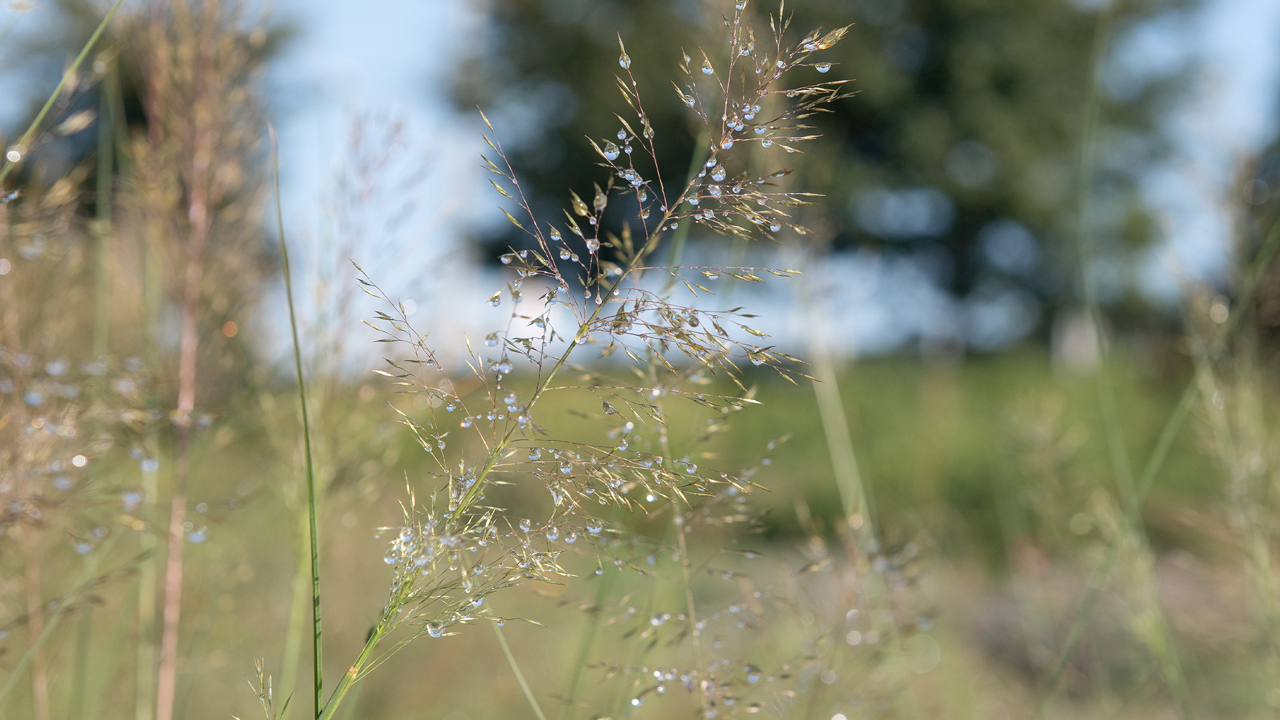
Sporobolus heterolepis // Prairie Dropseed
2-3’ tall + wide
Prairie dropseed is a Great Plains native that gets its name from the way its tiny seeds drop to the ground. Another of our shorter grasses, prairie dropseed is a perfect selection for borders, the front row of foundation plantings, and as groundcover for slopes or rock gardens. Its airy, branched flower spikes have a coriander-like fragrance and seem to float like a mist over the clumping green foliage, which turns golden in the fall and bronze in the winter.
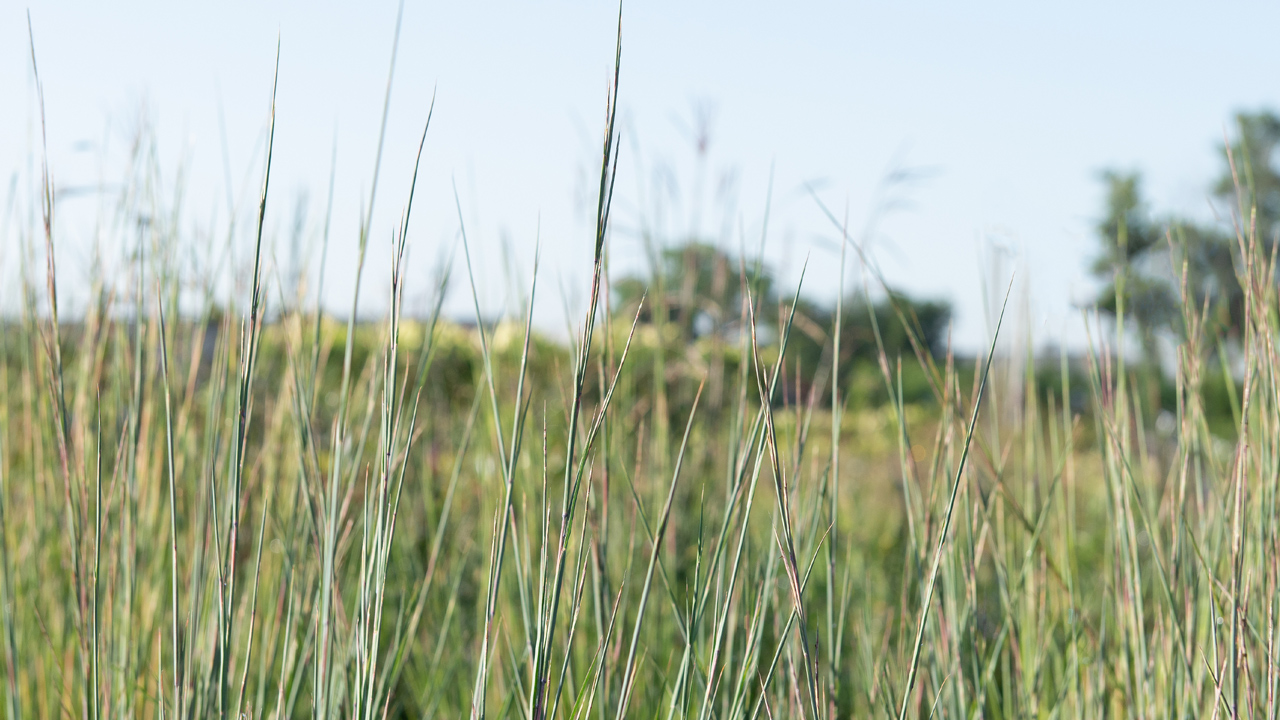
Schizachyrium scoparium // Little Bluestem
2-3’ tall + 1-2’ wide
When we think of fall color, we often think of trees, but a few of our grass cultivars can be just as brilliant. This little bluestem cultivar ‘Blaze’ is a good example. In early spring, ‘Blaze’ starts as an upright clump of light blue foliage that evolves to a grayish-green with purple tones in the summer. When fall arrives though, the foliage turns to a kaleidoscope of orange, purple, and red tones. The flowering spikes are attractive too with silvery-haired seed heads that give them a fuzzy texture.

Panicum virgatum // Switchgrass
3-5’ tall + 1-2’ wide
Switchgrass is one of the foundations of our native tallgrass prairie, and its vertical form topped with airy seed heads make it a standout in the home landscape too. In our collection, you’ll find two cultivars that feature switchgrass’s distinctively colorful foliage, but in two different hues. ‘Shenandoah’ emerges blue-green in the spring but becomes a rich shade of burgundy in June. ‘Heavy Metal’ on the other hand displays a unique shade of metallic blue throughout the summer. Like most grasses, switchgrass can grow well in dry soil, but because it also tolerates wet conditions – even occasional flooding – it’s a perfect candidate for rain gardens and wet meadows.
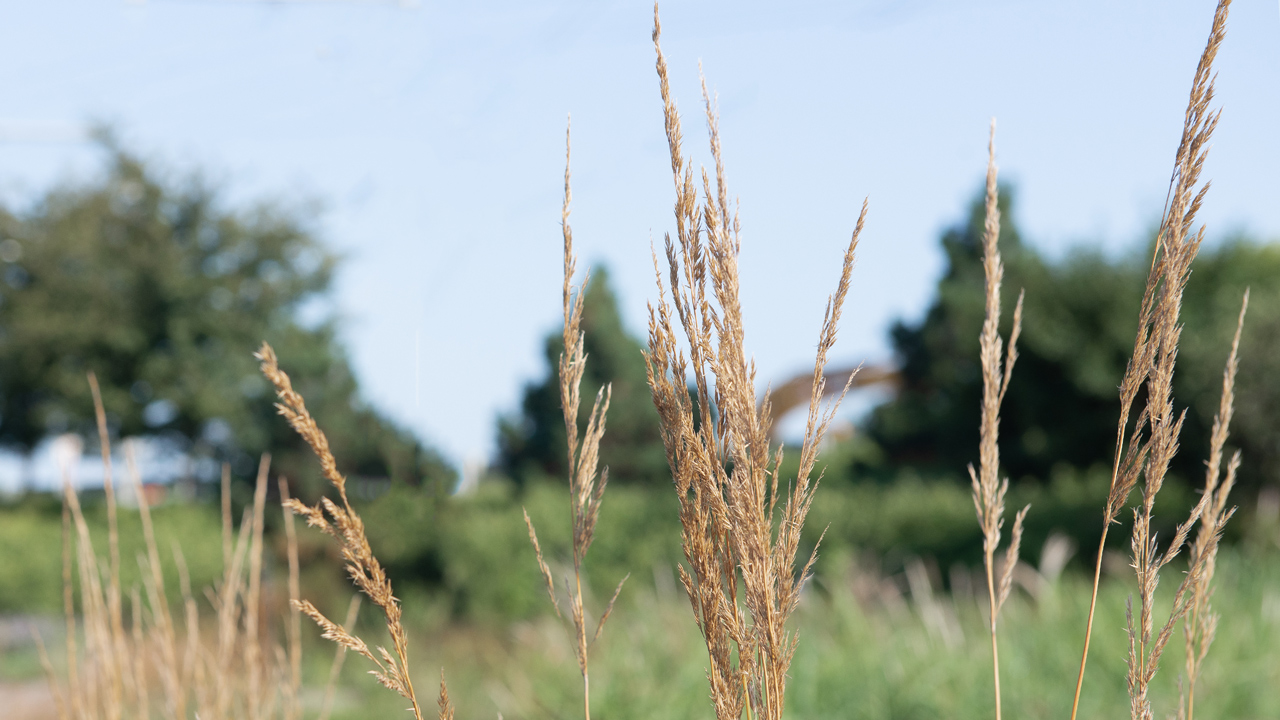
Calamagrostis x acutiflora // Feather Reed Grass
3-5’ tall + 1-3’ wide
Grasses in the genus Calamagrostis are a little different. Unlike our Midwest prairie native grasses, which tolerate a range of soil moistures, these feather reed grasses prefer a little more consistent moisture. As a group, feather reed grasses form large, upright clumps of slender foliage topped with a dense arrangement of narrow, vertical flower spikes – reminiscent of a broom. The cultivar ‘Karl Foerster’ is a well-known variety with bright green foliage and tawny, golden seed heads. ‘Avalanche’ and ‘Overdam’ are similar but with pinkish flower spikes and variegated foliage featuring white striping down the center or along the margins of each leaf.
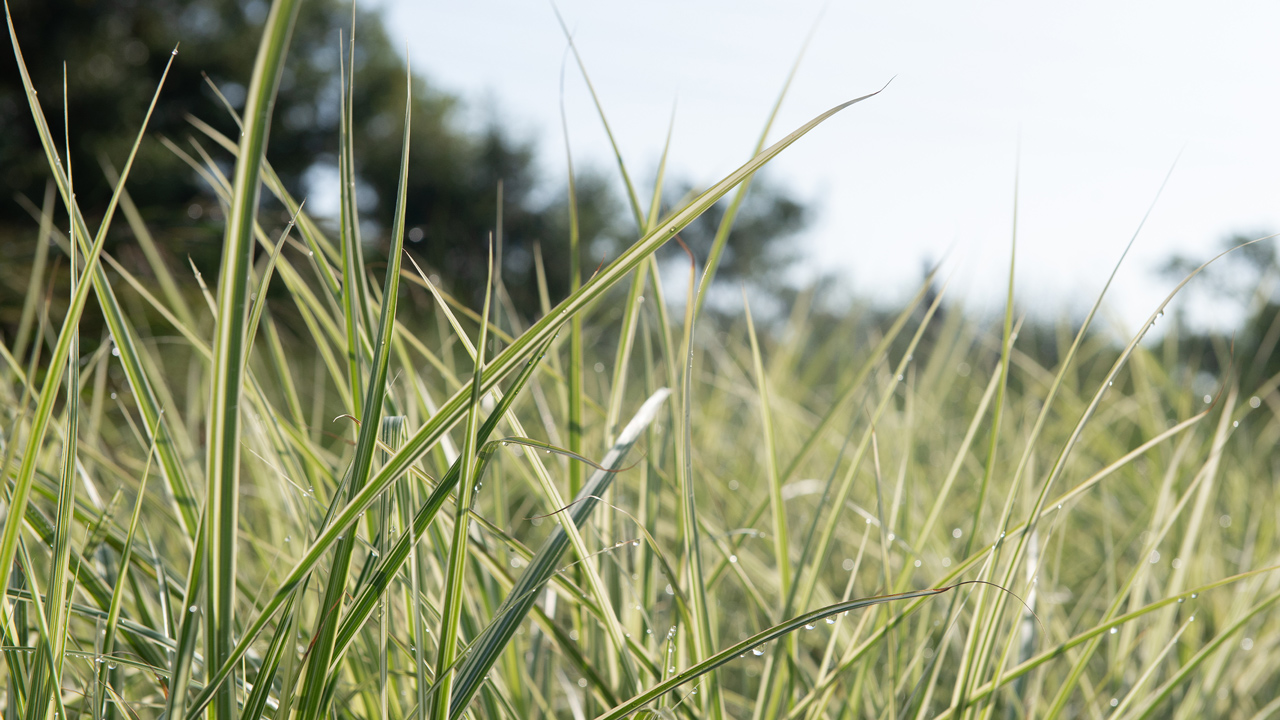
Miscanthus // Maiden Grass
4-9’ tall + 2-5’ wide
Grasses in the genus Miscanthus are native to areas of Africa and Asia and generally form graceful, rounded clumps of arching foliage that make them look something like fountains. The flower clusters are tassel-shaped and take on a fuzzy, silvery appearance as the seeds mature. Miscanthus ‘Purpurascens’ – also known as flame grass – displays orangish-red foliage in the fall. Another cultivar, M. sinensis ‘Variegatus,’ features prominent white variegation on its leaves. And M. sinensis ‘Gracillimus’ provides fresh grassy blooms into the fall with coppery flower panicles that turn to a silvery hue in late September.
Find the Perfect Grasses
Whether you choose one for its height, color, texture, or toughness, ornamental grasses are always a perfect addition to any sunny landscape. Head to the Nursery Yard to browse our full collection – and if you need a little guidance, just ask. We’d love to help you find the perfect one for your outdoor space.

